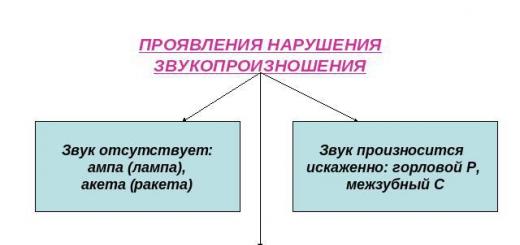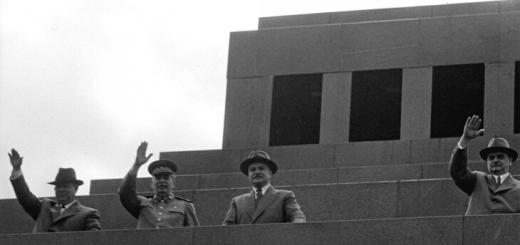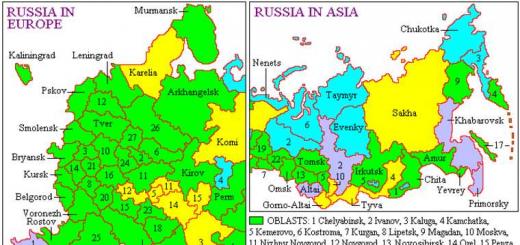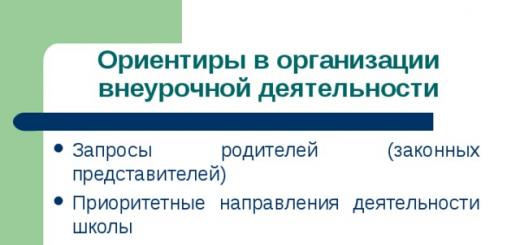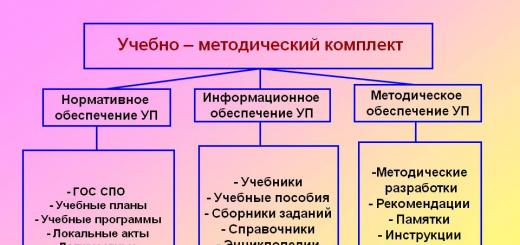By analogy with average ionic molality, we can consider average ionic activity:
calculated from the activities of individual ions. Average ionic activity and average ionic molality are related to each other by the average ionic activity coefficient, that is: , where
Then the chemical potential of a real electrolyte solution has the expressions:
where is the activity of the electrolyte, A, is related to the average ionic activity:
The values of the average ionic activity coefficient are determined experimentally by various methods, which include lowering the freezing point, osmotic pressure, saturated vapor pressure of the solvent and EMF measurements, which are discussed further. Knowing the average ionic molality and the average activity coefficient, we can calculate the average ionic activity and from it the chemical potential of the electrolyte in solution. In addition, for dilute solutions of electrolytes, the theory of interionic interactions was developed, which makes it possible to calculate the average ionic activity coefficients and the activity coefficients of individual ions in dilute solutions. This theory is called Debye-Hückel theory. According to it, the logarithm of the activity coefficient depends on ionic strength I electrolyte solution, which is determined as follows:
ionic strength based on molality:
ionic strength based on concentration:
and the summation extends over all ions in the solution.
For very dilute solutions ( I C< 0.01 моль дм –3) упомянутая зависимость имеет вид:
; ; ![]()
where A is a constant, the value of which depends on the properties of the solvent and temperature, but does not depend on the concentration of the electrolyte or its nature. If the solvent is water and the temperature is 25 °C, then A= 0.5092 (dm 3 mol –1) 1 / 2. This equation is called Debye Hückel's limit law. As can be seen from this equation, the activity coefficients of the electrolyte in very dilute solutions depend only on the ionic strength and charge of the ions, but do not depend on the individuality of the electrolyte. That is, at the same ionic strength, electrolytes, for example, MgCl 2 and Ca(OH) 2, should have the same activity coefficients. This is consistent with reality, but only at ionic strength values less than approximately 0.01 mol dm–3. At higher concentrations (and ionic strengths), activity coefficients depend on the nature of the electrolyte, in particular on the radii of the ions into which the electrolyte breaks up. Up to an ionic strength of approximately 0.1 mol dm–3 they can be calculated from Extended Debye-Hückel law:
![]() ;
; ![]() ,
, ![]()
Where IN– constant depending on the properties of the solvent (at 25 °C IN= 0.3301 (dm 3 / 2 mol –1 / 2 Å –1 for water solvent, Å – angstrom, 10 –10 m), and r– crystallographic radius of the ion. Unfortunately, the individual crystallographic radii of ions are, in fact, not precisely known, since only internuclear distances are determined for crystal structures. Any of the modern ion radius systems is based on an arbitrary choice of the radius of at least one ion, from which the relative radii of all other ions are calculated. On the other hand, the usual values of ion radii are such that the product INr the denominator on the right side of the equation is approximately 1 for most ions. Based on this, the extended Debye-Hückel law is often used in the form.
Activity and activity coefficient of the electrolyte. Ionic strength of the solution. Ionic strength rule.
Activity of dissolved salt A can be determined by vapor pressure, solidification temperature, solubility data, and the EMF method. All methods for determining the activity of a salt lead to a value that characterizes the real thermodynamic properties of the dissolved salt as a whole, regardless of whether it is dissociated or not. However, in the general case, the properties of different ions are not the same, and thermodynamic functions can be introduced and considered separately for ions of different types:
m+ = m + o + RT ln a + = m + o + RT ln m+ + RT lng + ¢
m – = m – o + RT ln a –= m –o +RT ln m– + RT lng – ¢ ,
Whereg + ¢ And g – ¢ - practical activity coefficients (activity coefficients at concentrations equal to the molality m ).
But the thermodynamic properties of various ions cannot be determined separately from experimental data without additional assumptions; we can only measure the average thermodynamic values for the ions into which the molecule of this substance decays.
Let the dissociation of salt occur according to the equation
An+ IN n-= n+ A z + + n - B z - .
With complete dissociationm + = n + m , m - = n - m . Using the Gibbs–Duhem equations, it can be shown that
A + n + ×A - n - ¤ A=const .
Standard states for finding activity values are defined as follows:
lim a + ® m + = n + m at m ® 0 ,
lim a – ® m – = n – m at m ® 0 .
Standard condition for A is chosen so thatconstwas equal to 1. Then
A + n + ×A -n-=A .
Since there are no methods for experimentally determining the values a + And A – separately, then enter the average ionic activity A ± , determined by the relation
A ± n =A .
Thus, we have two quantities characterizing the activity of the dissolved salt. The first one- This molar activity , that is, the activity of the salt, determined independently of dissociation; it is determined by the same experimental methods and according to the same formulas as the activity of components in non-electrolytes. Second value- average ion activity A ± .
Let us now introduce ion activity coefficients g + ¢ And g – ¢ , average ionic molality m ± And average ion activity coefficient g±¢ :
a + = g + ¢ m + ,a – = g – ¢ m – ,a ± = g ± ¢ m ± ,
Whereg ± ¢ =(g¢ + n + × g¢ - n - ) 1/ n ,m ± =(m + n + × m - n - ) 1/ n =(n + n + × n - n - ) 1/ nm .
So, the main quantities are related by the relations
a ± = g ± ¢ m ± = g ± ¢ ( n + n + × n - n - ) 1/ n m = L g ± ¢ m ,
Where L =(n + n + × n - n - ) 1/ nand for salts of each specific type of valency is a constant value.
Magnitudeg ± ¢ is an important characteristic of the deviation of a salt solution from the ideal state. In electrolyte solutions, as well as in non-electrolyte solutions, the following activities and activity coefficients can be used:
g ± = - rational activity coefficient (practically not used);
g ± ¢ = - practical activity coefficient (average molal);
f ± =± (g ± ¢ ) from the concentration of the solution ( With or m) has a minimum. If we depict the dependence in lg coordinatesg ± ¢
Rice. 24. Dependence of the electrolyte activity coefficient on its concentration for salts of different valence types
The presence of other salts in the solution changes the activity coefficient of a given salt. The total influence of a mixture of salts in a solution on the activity coefficient of each of them is covered by a general pattern if the total concentration of all salts in a solution is expressed in terms of ionic strength. By ion force I(or ionic strength) of a solution is the half-sum of the products of the concentration of each ion and the square of the number of its charge (valence), taken for all ions of a given solution.
- ion indices of all salts in solution; m i= n im .Lewis and Randall opened empirical law of ionic strength: average ion activity coefficientg ± ¢ a substance dissociating into ions is a universal function of the ionic strength of a solution, that is, in a solution with a given ionic strength, all substances dissociating into ions have activity coefficients that do not depend on the nature and concentration of the substance, but depend on the number and valence of its ions.
The law of ionic strength reflects the total interaction of ions in a solution, taking into account their valency. This law is accurate only at very low concentrations (m ≤ 0.01); already at moderate concentrations it is only approximately correct. In accordance with this law, in dilute solutions of strong electrolytes
lg g ± ¢ = - A .
Using activity instead of ion concentration makes it possible to formally take into account the entire set of interactions (without taking into account their physical nature) that occur in electrolyte solutions. This method of describing interactions in relation to electrolyte solutions has a number of features.
Chemical potential of the dissolved salt ( m S) is equal to:
Where a S - salt activity; m S 0 - standard value of chemical potential corresponding a S =1.
If the electrolyte dissociates into n + cations and n - anions, then, based on the condition of electrical neutrality, the chemical potential of the salt is related to the chemical potentials of the cations and anions by the ratio:
m S= n+m++ n - m --; m S 0 = n+m+ 0 + n - m -- 0; (1.7)
The chemical potential of an ion is related to the activity of the ion by the relationship:
Where m i - chemical potential of a cation or anion.
From equations (1.5-1.7) it follows that:
= n+ + n- , (1.9)
Due to the fact that both cations and anions of the solute are simultaneously present in electrolyte solutions (it is impossible to obtain a solution containing only cations or anions), it is impossible to estimate the activity and activity coefficient of an individual ion. Therefore, for electrolyte solutions, the concepts of average ionic activity and average ionic activity coefficient are introduced.
For an electrolyte that dissociates into n + cations and n - anions, the average ionic activity of the electrolyte a ± is equal to the geometric mean of the product of the activities of the cation and anion:
Where a+ and a- – activity of cations and anions, respectively; n = n+ + n-- the total number of ions formed during the dissociation of an electrolyte molecule.
For example, for a solution of Cu(NO 3) 2:
The average electrolyte activity coefficient g ± and the average number of electrolyte ions in solution are calculated similarly n ±:
where + and - are the activity coefficients of the cation and anion; n± is the average number of cations and anions in the solution.
For example, for an electrolyte KCI=K + + CI - the average number of ions in the solution is n± = (1 1 ·1 1) 1 = 1, that is, there is one cation and one anion in the KCI solution. For the electrolyte Al 2 (SO 4) 3 = 2Al 3+ + 3SO 4 2- the average number of ions in the solution is n± = (2 2 3 3) 1/5 =2.56. This means that in calculations of average activity the same average number of cations and anions (2.56) will appear, different from the actual number (2 cations, 3 anions).
Typically, the average ionic activity and the average ionic activity coefficient are determined experimentally (based on the thermodynamic properties of solutions):
By increasing the boiling point of the solution;
By decreasing the freezing point of the solution;
Based on the vapor pressure of the solvent above the solution;
According to the solubility of poorly soluble compounds,
Using the EMF method of galvanic cells, etc.
The average ionic activity and the average ionic activity coefficient of the electrolyte for dilute solutions of strong electrolytes can be determined theoretically using the Debye-Hückel method.
The average ionic activity and the average ionic activity coefficient depend not only on the concentration of the solution, but also on the charge of the ion. In the region of low concentrations, the average ionic activity coefficient is determined by the charge of the forming ions and does not depend on other properties of electrolytes. For example, in the region of low concentrations g ± for solutions of KCl, NaNO 3, HCl, etc. are the same.
In dilute solutions of strong electrolytes, the average activity coefficient g ± depends on the total concentration of all electrolytes and ion charges present in the solution, i.e. g ± depends on the ionic strength of the solution I.Ionic strength of solution calculated by the formula:
Where m i–molal (or molar) concentration i- that ion; z i- charge of the ion. When calculating the ionic strength of a solution, it is necessary to take into account all the ions present in the solution.
Exists solution ionic strength rule: in dilute solutions, the activity coefficient of a strong electrolyte is the same for all solutions with the same ionic strength, regardless of the nature of the electrolyte. This rule is valid at concentrations of no more than 0.02 mol/dm 3. In solutions of medium and high concentrations, the rule of ionic strength is transformed, as the nature of the interionic interaction becomes more complex and the individual properties of electrolytes appear.
The total concentration of ions in a solution is the molar concentration of the dissolved electrolyte, taking into account its degree of dissociation into ions and the number of ions into which the electric stove molecule dissociates in solution.
For strong electrolytes α = 1, therefore the total concentration of ions is determined by the molar concentration of the electrolyte and the number of ions into which the strong electrolyte molecule breaks up in solution.
Thus, in the case of dissociation of a strong electrolyte - sodium chloride in an aqueous solution
NaCl → Na + + Cl -
at initial electrolyte concentration With(NaCl) = 0.1 mol/l, the ion concentrations turn out to be equal to the same value: c(Na +) = 0.1 mol/l and c(Cl -) = 0.1 mol/l.
For a strong electrolyte of a more complex composition, for example, aluminum sulfate Al 2 (SO 4) 3, the concentrations of the cation and anion are also easily calculated, taking into account the stoichiometry of the dissociation process:
Al 2 (SO 4) 3 → 2 Al 3+ + 3 SO 4 2-
If the initial concentration of aluminum sulfate from ref= 0.1 mol/l, then c(A1 3+) = 2 0.1 = 0.2 mol/l and With( SO 4 2-) = 3 · 0.1 = =0.3 mol/l.
Activity A related to overall concentration With formal relationship
Where f ˗ activity coefficient.
At With→ 0 value a → c, So f→1, i.e. for extremely weak solutions, the activity in numerical value coincides with the concentration, and the activity coefficient is equal to unity.
Lewis and Randall introduced some mathematical corrections to the relationships proposed by Arrhenius.
G. Lewis and M. Randall proposed a method of using activities instead of concentrations, which made it possible to formally take into account the whole variety of interactions in solutions without taking into account their physical nature.
In electrolyte solutions, both cations and anions of the solute are simultaneously present. It is physically impossible to introduce only one type of ions into a solution. Even if such a process were feasible, it would cause a significant increase in the energy of the solution due to the introduced electric charge.
The connection between the activities of individual ions and the activity of the electrolyte as a whole is established based on the condition of electrical neutrality. For this purpose, the concepts are introduced average ionic activity And average ion activity coefficient.
If an electrolyte molecule dissociates into n + cations and n - anions, then the average ionic activity of the electrolyte a ± is equal to:
![]() ,
,
where and is the activity of cations and anions, respectively, n is the total number of ions (n=n + + n -).
The average ionic activity coefficient of the electrolyte is written similarly:, characterizing the deviations of the real solution from the ideal
![]() .
.
Activity can be represented as the product of concentration and activity coefficient. There are three scales for expressing activities and concentrations: molality (molal, or practical scale), molarity With(molar scale) and mole fraction X(rational scale).
In the thermodynamics of electrolyte solutions, the molal concentration scale is usually used.
Ionic strength is the half-sum of the products of ionic concentrations in a solution and the square of their valency.
I=1/2∑zi^2*mi, where zi is the charge of the ion, mi is the molality of the ion. According to the first approximation D-X (limit law): logγ±=−A∣z + z - ∣√I, where I is the ionic strength of the solution,
z + z - ion charges; A=(1.825∗10^6)/(ε T)^3 /2, where ε is the dielectric constant, T is the temperature. For water at 25 degrees A = 0.509.
Lewis-Randall Pr.:
The average ionic activity coefficient depends only on the ionic strength of the solution and does not depend on other ions present in the solution. Scope of application: 0.01-0.02 mol/kg
(When a strong electrolyte is added to the solution, which does not have common ions with our slightly soluble salt, the PR does not change, since it depends only on T and pH. The solution will decrease, because I will increase. )
The occurrence of a potential jump at the interface between conductors of the first and second kind. Reversible electrodes and reversible galvanic cells. Conventional notation of a properly open galvanic element. Electromotive force (EMF) of a galvanic cell.
Potential µ(cu2+plate) > µ(cu2+solution)=>plastic in solution until the potential equalizes=>extension of the electrical layer at the l-solid interface=>a potential jump occurs from Me and l- ty. The phenomenon of a potential jump at the phase boundary underlies the operation of galvanic cells.
Electrodes can be cation or anion reversible. Electrodes of the 1st kind with a metal plate and gas electrodes, which produce a cation in solution, are reversible for the cation. For anion - type 1 with a non-metallic plate, gas electrodes, which give an anion in solution, and type II electrodes. A galvanic cell is called reversible if, when a current is passed through it in the opposite direction, reverse chemical reactions occur in it. Such a galvanic cell is composed of two reversible electrodes. Conventional notation: the electrode that has a more negative standard electrode potential is written on the left; phase boundaries are indicated by a solid vertical line, solution boundaries are indicated by a single vertical dotted line if there is a diffusion potential, or a double vertical dotted line if there is none. The exception is the hydrogen electrode, which is always located on the left. Example of a properly open galvanic cell: Pt, H2 | HCl || CuSO4 | Cu | Pt The emf of a galvanic cell is equal to the difference in the electrode potentials of its constituent electrodes. According to the accepted form of recording a galvanic cell, its EMF is equal to the difference in the electrode potentials of the right and left electrodes: E = Epr - Eleft > 0
40.Give an example of a chemical galvanic cell composed of a gas electrode and an electrode of the second kind, an electrochemical circuit without liquid connections - “without transfer”. Write down the equations of electrode half-reactions and the equation of the chemical reaction, due to the energy of which electrical energy is generated by this element.
An example of such a chain is the hydrogen-silver chloride element
Pt | (H2) | HCl | AgCl | Ag, (I)
The cat consists of hydrogen and silver chloride electrodes immersed in a solution of hydrogen chloride. When working in such an element, the following reactions occur: 1/2H 2 (gas) ® H + (solution) + e; AgCl (sol) + e ®Ag (sol) + Cl – (solution)
So, the overall process is a chemical reaction: 1/2H 2 (gas) + AgCl (sol)®Ag (sol) + H + (solution) + Cl – (p-p);
The EMF of such a circuit is equal to the potential difference between the silver-silver chloride and hydrogen electrodes. Taking into account ur-iya we get
The difference between the standard potentials of silver chloride and hydrogen electrodes gives the standard EMF of the circuit E oh, but since the standard potential of the hydrogen electrode is taken equal to zero, then E o is equal to the standard potential of a silver chloride electrode. If hydrogen pressure = 1, then
![]() .
.
If hydrogen chloride is completely dissociated in the solution, then the product of the activities of hydrogen and chlorine ions can be replaced by the average ionic activity, then

Gas electrodes, hydrogen electrode. Derivation and analysis of an equation expressing the dependence of the potential of the hydrogen electrode on the activity of hydrogen ions and the pressure of molecular hydrogen. Scope of application of the hydrogen electrode.
Gas electrodes are a plate of inert metal, washed by gas, immersed in a solution containing ions of this gas. Electrode example: Pt, H2 | H+ Half reaction equation: H + + e → ½ H2 Nernst equation: ![]()
<= ½ H2 Уравнение Нернста:
![]()
Hydrogen electrode. Conditional potential scale. Nernst equation for the potential of a hydrogen electrode. Dependence of the electrode potential on the pH of the solution and the pressure of molecular hydrogen. Scope of application of the hydrogen electrode.
Hydrogen el-d-plate or wire made of Me, well absorbing hydrogen gas, saturated with hydrogen (at atmospheric pressure) and immersed in water solution containing hydrogen ions.
Pt, H2 | H+ Half reaction equation: H+ + e →<= ½ H2 Уравнение Нернста:
![]()
The use of water in production is very inconvenient because it is associated with the supply of gaseous H2. Advantage: wide range of applicability. Can be used in a wide range of temperature, pressure, and pH, as well as in many non-aqueous or partially aqueous solutions -rah.
Conditional water scale at which, at all temperatures, the potential of standard water el-da is chosen for 0. It differs from the Nernst scale in that instead of unit concentrations and pressure, unit activity and volatility are selected .
рН=-log=>E=-0.059pH
Standard hydrogen electrode. Conditional electrode potential (electrode potential in the hydrogen scale). Relationship between the EMF of a galvanic cell and conventional electrode potentials. Rule of signs of EMF and electrode potentials.
Standard water el-d – water el-d. the pressure of the supplied hydrogen is 1 atm, and the activity of H2 ions in the solution = 1 at T = 298 K
Conditional electric potential (or electric potential on the hydrogen scale) E = EMF of an element composed of a given electric voltage and a standard water electric potential, i.e. E = EMF.
EMF connection: a) find the difference in conditional electric potential: E2-E1=L2Y M 2 -L1Y M 1 +(m2Y pt -m1Y pt)= L2Y M 2 -L1Y M 1 +m2 Y M 1
b) comparison with the equation for the EMF given by E=E2-E1
Rule of signs: 1. Fundamental Rule– EMF is positive if inside the galvanic cell positive electricity (cations) moves from left to right (Stockholm, international conference 1953)
2. conclusions. When ions are discharged on the right electrode - the reduction process (the electrode is charged positively), and the electrode itself is the positive pole of the g.e. (cathode); on the left electrode – oxidation process (negative pole, anode).
3. Correspondence of EMF sign system of signs of the theory of chemistry. affinity a)
b) and, spontaneous process


